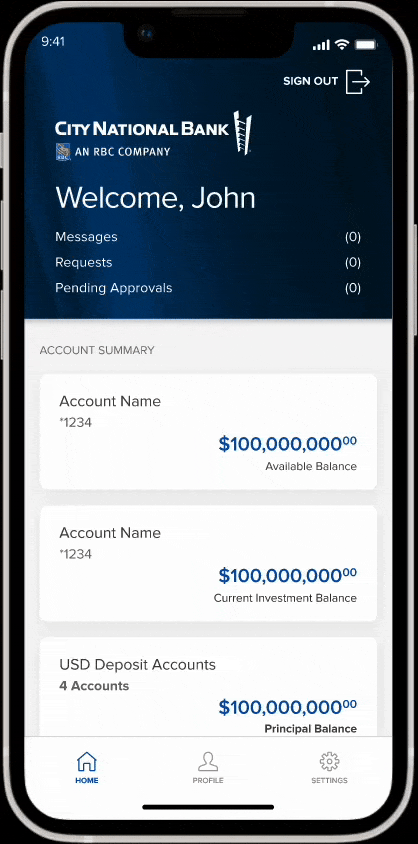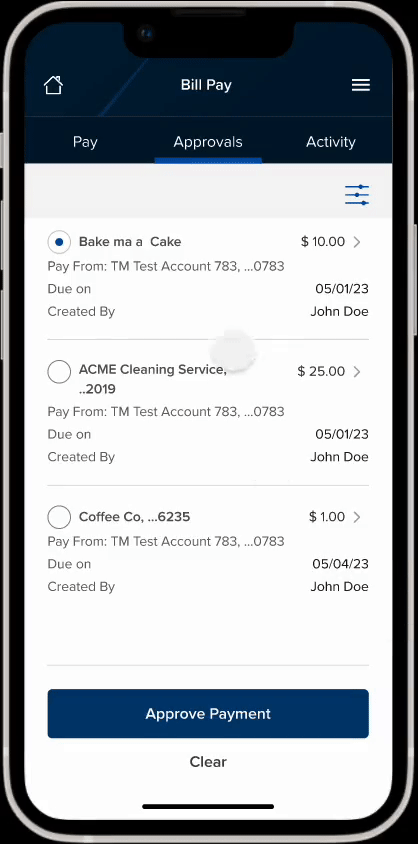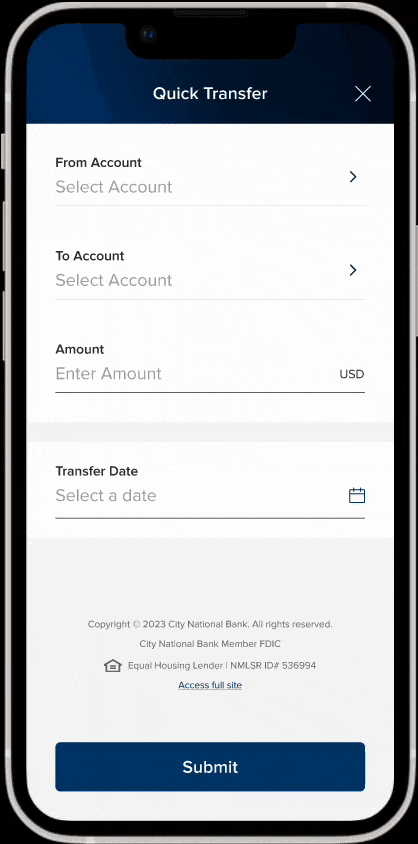CASE STUDY
Business Banking App Overhaul — Strategy, Navigation & Leadership
As Lead UX Designer, I spearheaded the in-house redesign of a business banking app, prompted by an expiring vendor contract and accelerated timelines.
In parallel, I led a research-driven overhaul of the app’s navigation and information architecture to resolve usability issues and align the structure with user behaviors and expectations.
MY ROLE
As team lead
Oversaw team management, design strategy, UX/UI design execution, and stakeholder interactions
Collaborated with UX research, UI design, copywriting, and stakeholder groups
Ensured holistic alignment between design, functionality, and business goals
Key skills demonstrated
UX Strategy & Research
Information Architecture & Interaction Design
Team Leadership & Cross-functional Collaboration
Design Systems & Accessibility
Stakeholder Management & Change Leadership
Prototyping & Presentation
Agile Execution
DESIGN PROCESS OVERHAUL
Team Setup: Myself as Lead UX Designer, a Senior UI Designer, and a Copywriter
Project Scope: Redesign 9 features in 5 months over 10 sprints
🔍 Discovery
Held sessions with Subject Matter Experts to scope features.
Conducted heuristic evaluations using FigJam to uncover usability issues.
Challenge: SME unavailability was tackled by tracking story points, allowing parallel workflow.
📦 Review & Delivery
Presented video prototypes and reference designs to ease stakeholder resistance.
Prioritized engineering concerns by creating a phased rollout.
💡 Ideation
Low to high-fi wireframes using the Roxbury Design System for consistency and WCAG compliance.
Aligned voice/tone by collaborating with UX copywriters on fresh copy guidelines.
Improved communication (morning check-ins, DMs, Figma notes) to eliminate task silos.
🎯 Result
Delivered all 9 features ahead of schedule.
Over 240 story points completed.
💫 Impact: Improved Workflow
Given the accelerated timeline, we streamlined the workflow by assigning focused roles with clear handoff protocols. This model was so effective it was adopted by other design teams.
💫 Impact: Team Structure
By embedding design into sprint cycles and setting up weekly reviews and shared docs, we scaled efficiently and established a collaboration model now used by other teams.
DESIGN ARTIFACTS
Thanks to the improved workflow, our team delivered all designs ahead of schedule and received positive feedback from users during prototype testing.
“It’s so much easier to get around now. I don’t feel lost every time I open the app.”
💬
“I love how simple everything is now. It saves me so much time.”
💬
“The new redesign looks great! Waaay better than before!”
💬
NAVIGATION REVAMP: RESEARCH SPIKE & STRATEGIC DESIGN
Team Setup: Myself as Lead UX Designer and a UX Researcher
Project Scope: 6 week research spike
🔬 Research Strategy
Crafted “How Might We…” statements to frame the problem and define objectives.
Conducted a task frequency survey to highlight user priorities (e.g., view balance, deposit check, transactions).
Mapped existing apps using sitemaps and competitive analyses, noting navigation patterns and industry trends.
🎨 Design & Testing
Designed a hub-and-spoke navigation to reduce friction and enable 0–2 tap task access.
Replaced hamburger menu with bottom nav and relocated key actions (e.g., approvals, messages) to the header with badges.
Added customizable dashboard quick links for power users.
Conducted First Click Testing to validate task discoverability and icon recognition.
🎯 Result
The research led to valuable design insights. We secured a research spike, influenced design direction, and provided templates for navigation improvements across other design teams.
💫 Impact: Data-Driven Decisions
User research and usage data directly shaped design decisions, leading to clearer navigation and more efficient task flows. This research-led approach set a new standard for decision-making by stakeholders.
LEADERSHIP IMPACT
🧠 Strategic Process Design
Established a scalable design workflow that boosted team efficiency and became a model for future initiatives.
🤝 Cross-functional Collaboration
Led collaborative sessions with UX researchers, UI designers, copywriters, engineering leads, and stakeholders.
👥 Team Enablement
Structured roles, defined workflows, and coached team members (e.g., upskilling the copywriter to directly work in Figma).
📊 Stakeholder Influence
Enhanced buy-in through targeted prototyping, data-supported presentations, and staggered feature launches.
🧑💻 User Advocacy
Grounded decisions in real user data, surveys, and usability testing—improving navigation ease-of-use and task completion.
REFLECTION
This project strengthened my ability to lead complex, high-impact projects under tight deadlines while driving user-centered innovation.
Key Impact as Lead Designer:
Drove high-impact, user-centered projects under tight deadlines.
Created a repeatable design process to align cross-functional teams.
Built stakeholder trust and secured buy-in amid resistance.
Prioritized effectively across constrained resources and parallel workstreams.
Research influenced long-term strategy, reinforcing data-driven decisions.
MORE CASE STUDIES
© Eugene Park, 2025




